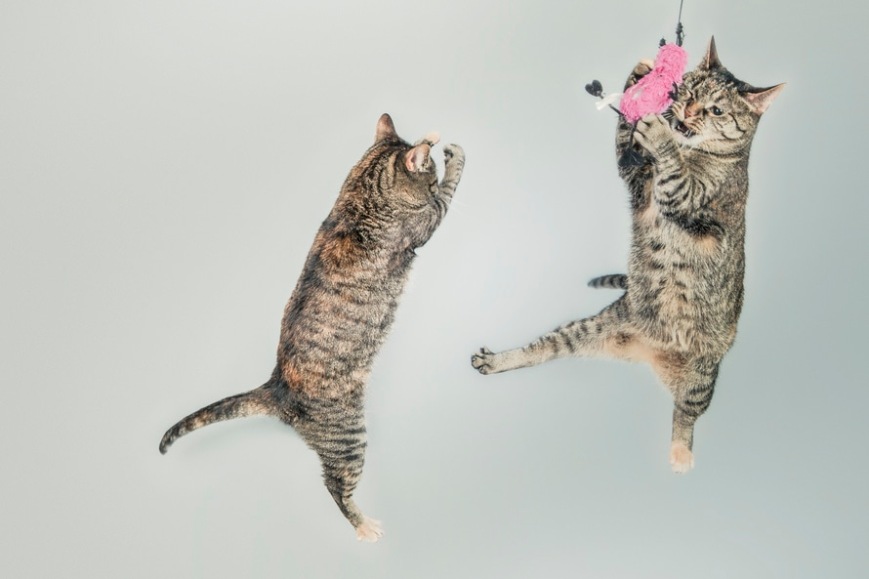
One of the most common new year’s resolutions is to lose weight – but how often do we consider whether our cats are a healthy weight? Recent figures from a US-based pet insurance company suggest that pet obesity in that country has risen steadily for the past six years. In the UK, the picture is similar with pet obesity a growing problem (if you’ll pardon the pun).
Like we humans, excessive body fat increases the risk of preventable health issues and may shorten the life expectancy of cats. Complications from obesity in cats include bladder and urinary tract disease, chronic kidney disease, diabetes, asthma, liver disease, arthritis, high blood pressure, heart failure, gall bladder problems and spinal immobility.
A cat’s weight can be controlled most effectively through a combination of exercise and diet. Doing one without the other most often results in failure (as it does with us!)
It is important to remember that a ‘crash’ diet is not for cats – nor humans! If you think your cat is overweight, it is best to first visit a vet to have it checked over and get some advice about diet and portions. Overweight cats should never be starved or put on a ‘crash diet’ as any period of no food can very quickly be harmful. A gradual, steady decrease in bodyweight is ideal – it may take up to a year for a severely overweight cat to reach its ideal body condition.
A balanced diet
Cats have a high protein requirement because they cannot manufacture certain amino acids (vegetarianism is not for felines). Commercial pet foods are designed to provide the required nutrition for your cat. Don’t forget that cats always need a generous bowl of fresh water on hand, ideally situated in a different place from the food.
If you have adopted a cat it’s wise to keep them on the same food that they have been used to as a sudden change of diet can cause an upset stomach. Any changes to their diet should be introduced slowly and by mixing the old food brand with the new over about a week.
You can feed your cat wet or dry food, or a mixture of both. Some people give cats dry biscuits in the morning and wet food in the evening. If your cat has a medical condition, such as urinary tract problems, a vet may recommend it eats only wet food. Wet food is closer, in terms of texture, to a cat’s natural diet while dry food helps to exercise a cat’s teeth and gums, helping to stave off dental problems.
How much food?
Commercial cat foods provide guidelines as to the ideal daily amount your cat should eat, based on its weight. The amount of food required to maintain an ideal body condition will vary depending on age, activity and environment. By regularly monitoring your cat’s weight you can adjust their intake accordingly.
Mealtimes can be made fun for cats if you use a toy that slowly releases food – this will help increase the amount of time they spend eating and give them a little exercise at the same time. If your cat is active or curious, try dividing the daily portion into several bowls and place them in different locations throughout your home. This helps to add interest by allowing your cat to discover sources of food throughout the day.
There are many cat treats now on the market. If you do give your cats treats make sure you cut down on their normal food accordingly, so you can avoid overfeeding. It is best to stick to cat food treats rather than leftovers or raw meat, although a little bit of well-cooked fresh chicken or fish is okay. Cooked chicken bones are not OK, however! Also, feeding liver can cause serious illness in cats if given too frequently due to its high vitamin A content. It should not be given more than once weekly.
It can be difficult to manage a cat’s weight in multi-cat households. Some cats will happily finish anything the others do not appear to want. Feeding the overweight cat in a separate room can give the other cats in the household some time to eat. Remember to remove any leftover food before the overweight cat returns.
Because exercise is such an important part of weight control, indoor cats are particularly prone to obesity and it can be a manifestation of stress. Make sure your cat has enough activity in its life so that it can burn up the calories it consumes. That goes for all of us!
